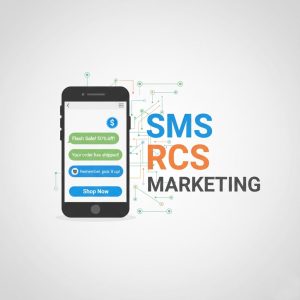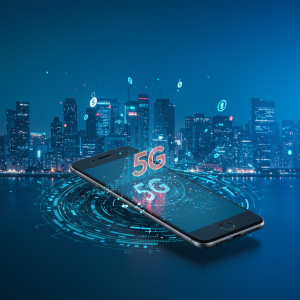SMS vs Email Marketing: Which Channel Delivers Better Results in 2025?

With smartphone usage at an all-time high and inbox competition fiercer than ever, the debate between SMS and email marketing has taken center stage. This comprehensive comparison will help you determine which channel aligns best with your marketing objectives in 2025.
The Current State of Digital Marketing Communications
Before diving into the specifics of SMS and email marketing, it’s important to understand the current digital communication landscape. According to recent studies, the average person receives approximately 121 emails per day but checks their text messages within minutes of receipt. This fundamental difference in engagement patterns sets the stage for our comparison.
Digital marketers are constantly seeking the perfect balance between reach, engagement, and conversion. While email marketing has been a staple for decades, SMS marketing has emerged as a powerful contender, particularly as mobile dominates consumer attention spans and purchasing decisions.
SMS Marketing: Strengths and Limitations
Immediate Impact and Visibility
SMS marketing’s most significant advantage lies in its immediacy. With an average open rate of 98%, compared to email’s 20-30%, text messages get seen almost instantly. Research from Gartner shows that 90% of text messages are read within three minutes of delivery, making SMS the undisputed champion for time-sensitive communications.
Concise Communication
The character limit of text messages (typically 160 characters) forces marketers to craft concise, focused messages. This limitation, while sometimes challenging, often results in clearer calls-to-action and more straightforward messaging that resonates with today’s attention-limited consumers.
Higher Engagement Rates
SMS marketing typically generates response rates 7-8 times higher than email marketing. This engagement advantage makes text messaging particularly effective for:
- Flash sales and limited-time offers
- Appointment reminders
- Shipping notifications
- Two-factor authentication
- Urgent announcements
Cost Considerations
SMS marketing generally costs more per message than email. While email services often charge based on subscriber count, SMS campaigns usually incur costs per message sent. However, when measuring cost against engagement metrics, SMS can deliver superior ROI despite the higher initial investment.
Compliance and Permission Requirements
SMS marketing faces stricter regulatory requirements than email. The Telephone Consumer Protection Act (TCPA) and similar regulations worldwide require explicit opt-in before sending marketing texts. Violations can result in significant penalties, making compliance management crucial for SMS campaigns.
Email Marketing: Strengths and Limitations
Rich Content Capabilities
Email’s greatest strength lies in its versatility. Unlike SMS, email supports rich media, including:
- High-resolution images
- Videos and animations
- Interactive elements
- Extended copy
- Multiple calls-to-action
This flexibility allows for comprehensive storytelling and brand building that simply isn’t possible within SMS constraints.
Cost-Effectiveness at Scale
Email marketing remains one of the most cost-effective digital marketing channels, with an average ROI of $36 for every $1 spent, according to Campaign Monitor’s latest research. This exceptional return makes email particularly valuable for businesses operating at scale.
Segmentation and Personalization Capabilities
Modern email marketing platforms offer sophisticated segmentation and personalization features. Marketers can tailor content based on:
- Demographic information
- Purchase history
- Browsing behavior
- Engagement patterns
- Customer lifecycle stage
These capabilities enable highly relevant communications that drive conversions and foster customer loyalty.
Analytics and Testing
Email marketing platforms provide comprehensive analytics dashboards, allowing marketers to measure open rates, click-through rates, conversion rates, and other key metrics. A/B testing capabilities further enhance optimization opportunities, enabling data-driven improvements over time.
Deliverability Challenges
Email’s primary limitation is its deliverability challenges. Spam filters, promotional tabs, and cluttered inboxes can prevent messages from reaching or being noticed by recipients. Maintaining a healthy sender reputation requires consistent attention to email marketing best practices.
Direct Comparison: SMS vs Email Marketing
Open Rates and Engagement
| Metric | SMS | |
|---|---|---|
| Open Rate | 98% | 20-30% |
| Response Rate | 45% | 6% |
| Click-Through Rate | 19% | 2-5% |
| Average Response Time | 90 seconds | 90 minutes |
These statistics highlight SMS marketing’s superior ability to capture immediate attention, while email marketing excels at delivering more complex information.
Content and Media Capabilities
SMS marketing is limited to plain text with occasional MMS capabilities for simple images. Email marketing, meanwhile, supports virtually any digital content format, including:
- HTML-rich designs
- Interactive elements
- Videos and GIFs
- Extensive copy
- Multiple images
- Attachments
Customer Acquisition vs Retention
Email marketing typically performs better for customer acquisition strategies, particularly through content marketing and lead nurturing sequences. The extended format allows for comprehensive education and relationship building.
SMS marketing, with its immediate impact, often excels at customer retention through timely, relevant communications. The personal nature of text messages creates a sense of urgency that can effectively drive repeat purchases and loyalty program engagement.
When to Use Each Channel
Ideal Use Cases for SMS Marketing
- Time-sensitive promotions and flash sales
- Order confirmations and shipping updates
- Appointment reminders
- Event notifications
- Customer service updates
- Two-factor authentication
- Location-based marketing
Ideal Use Cases for Email Marketing
- Detailed product announcements
- Content marketing and newsletters
- Comprehensive onboarding sequences
- Complex promotional campaigns
- Re-engagement campaigns
- Educational content
- Brand storytelling
Combining SMS and Email Marketing for Maximum Impact
Rather than viewing SMS and email as competing channels, forward-thinking marketers are increasingly integrating both into cohesive omnichannel strategies. This approach leverages the unique strengths of each medium while mitigating their individual limitations.
Complementary Channel Strategy
As highlighted by Mobile Dominate, an effective integrated approach might include:
- Using email for detailed introductions and comprehensive information
- Following up with SMS for time-sensitive calls-to-action
- Segmenting audiences to receive communications through their preferred channels
- Creating consistent messaging across channels while adapting content to each format
- Using cross-channel analytics to optimize the customer journey
Customer Journey Mapping
Mapping your customer journey helps identify the most appropriate channel for each touchpoint. For example:
- Awareness: Email newsletters and educational content
- Consideration: Email product demonstrations and comparative information
- Decision: SMS with limited-time offers or incentives
- Post-purchase: Email for detailed setup instructions, SMS for delivery notifications
- Loyalty: Combination of both channels based on customer preferences
Implementation Best Practices
SMS Marketing Best Practices
- Obtain explicit consent before sending marketing messages
- Identify your business clearly in each message
- Keep messages concise and focused on a single call-to-action
- Time messages appropriately during business hours
- Include opt-out instructions in every message
- Segment your audience for relevant messaging
- Monitor response rates and adjust frequency accordingly
Email Marketing Best Practices
- Create compelling subject lines to improve open rates
- Optimize for mobile devices with responsive design
- Segment your list for targeted content
- Personalize content beyond just using the recipient’s name
- Clean your list regularly to maintain deliverability
- Test and optimize using A/B testing
- Include clear CTAs that stand out visually
Measuring Success: KPIs for Each Channel
SMS Marketing KPIs
- Delivery rate
- Open rate
- Response rate
- Conversion rate
- Opt-out rate
- Cost per conversion
- ROI
Email Marketing KPIs
- Open rate
- Click-through rate
- Conversion rate
- Bounce rate
- Unsubscribe rate
- List growth rate
- Revenue per email
Future Trends in SMS and Email Marketing
As we look toward the future, several emerging trends will shape both SMS and email marketing:
AI-Driven Personalization
Artificial intelligence is revolutionizing both channels by enabling hyper-personalized content at scale. Predictive analytics can determine optimal send times, content preferences, and even predict customer behavior.
Conversational Marketing
Both SMS and email are evolving toward more conversational formats. Two-way SMS communications and interactive email elements are blurring the lines between marketing and customer service channels.
Enhanced Privacy Measures
With increasing privacy regulations like GDPR and CCPA, both channels will need to continue adapting to changing compliance requirements, potentially affecting targeting capabilities.
Making the Right Choice for Your Business
The choice between SMS and E -Post Marketing or application of both parts of your specific business goals, target groups and marketing strategies. Instead of looking at these channels as participants, you can consider them supplemented in your marketing arsenal.
Immediate, with extraordinary open prices, for high-prime communication, SMS marketing distributes unmatched performance. For detailed information, rich material and extensive customer, e -mail marketing is invaluable.
As consumer behavior moves 2025 and beyond, the most successful marketing strategies may include both channels, and benefit from their respective strength by creating spontaneous customer experiences in touch points.
When you understand the unique benefits and limitations of each channel, you can formulate a communication strategy that maximizes the marketing return.








